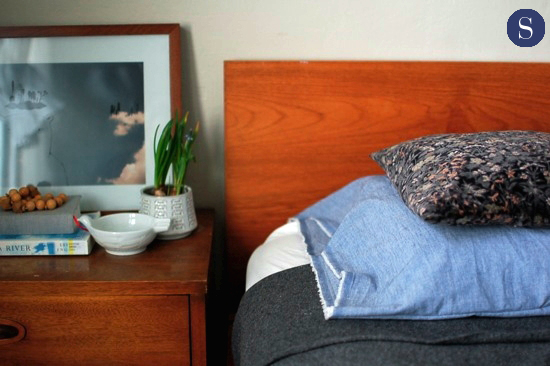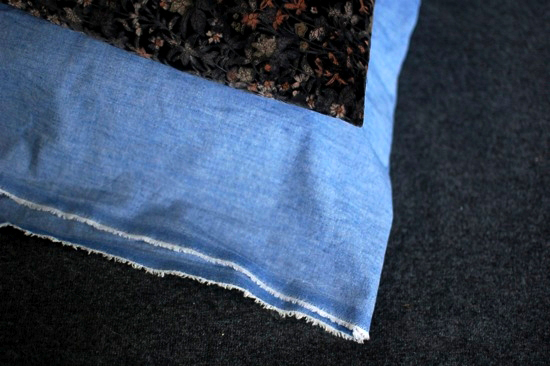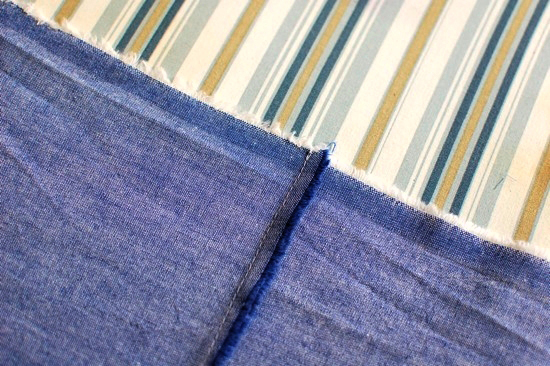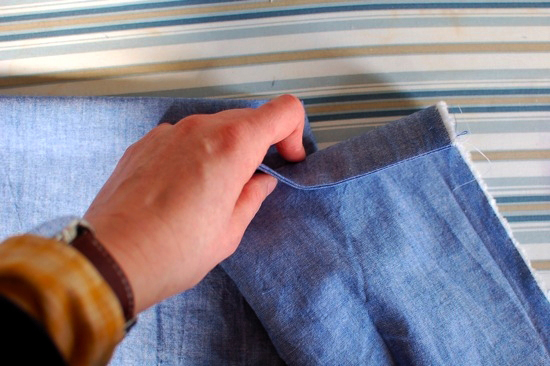
This week I freshened up our bedding by making several new pillow cases. It was extremely simple sewing with very gratifying results. I ended up being happier with them than any I could find to purchase, so I thought I’d share how they were made. They make decorative use of the selvage (contrasting edge) of the fabric. I used a chambray that I had picked up secondhand, an oxford cloth (not pictured, but also found secondhand), and some natural linen left from making projects for my shop. All these fabrics had a contrasting selvage.

If you have access to a sewing machine and an iron and can sew a straight line, you can make these pillow cases in under 15 minutes.
You will need fabric that is 60 inches wide that has a selvage worth showing off. Most 100% linens will work as do wovens like the chambray as well as shirtings and hand-spuns. The fabric needs to be something that will stand up to washing with the rest of your bedding. If you are going to use the cases decoratively as shams, you could also use woolens or a rough-hewn linen or hemp. For each case you will need approximately 2/3 of a yard of the fabric.
Wash and dry your fabric before beginning sewing. For my cases, I cut the fabric to 23 inches for each case and folded it over so that the selvages meet with the right side facing out (a lot of these types of fabrics don’t have a ‘right side’ and ‘wrong side’, just leave the side you want showing facing out). I added french seams to the cases, because it looks neat and can remain sturdy despite a lot of trips through the washer. I will attempt to explain how to make a french seam, but if my instructions are not clear to you, google ‘french seam’ there are all kinds of more thorough explanations and photos out there. It’s really quite easy.

Stitch a 1/4 inch seam along the length of each side of the case. Open up the case and press the seam over to one side (it doesn’t matter which side).

Turn the case inside out and press the seam flat. Sew a 3/8 inch seam along each side, encasing the previous seam inside. Turn right side out, trim threads and you have a sturdy case with no exposed seams.

Now, lay your head down and enjoy your handywork.
